Summary
- Recent flow test of well at Horse Hill in Surrey
- Company targeting Kimmeridge Clay shale
- Tight oil similar to Bakken Shale, North Dakota
- Fracking company UKOG planning to return
- Statements demonstrate long term goals
- Tight oil would require dense pattern of wells
- Would be ‘regionally extensive’, ‘pervasive’
- Threat of thousands of wells across region
- Plus processing plants, pipelines, waste sites
- UKOG strategy: Focus attention on next step
- Trying to distract from the big picture threat
- Need for investment forces some disclosures
- Ultimate goal to sell to much large company
- UKOG will seek further planning permission
- Now is the time to get organised and resist
Flow Test On Shale Formation
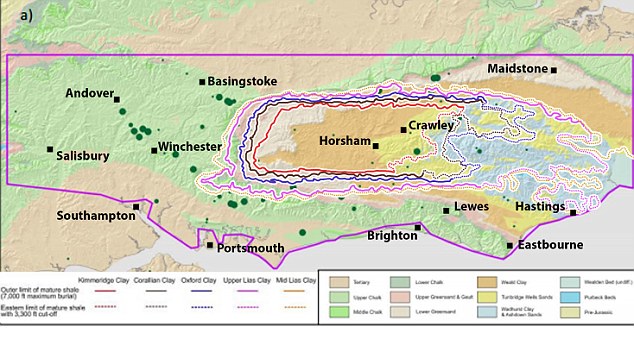
Shale Formations In Central Weald (Sussex, Surrey & Kent) Identified By The BGS Report As Containing Tight Oil (Click To Enlarge)
The recent news that oil has flowed during testing of the Horse Hill well in Surrey is bringing the fracking threat in the South East into much sharper focus. While Cuadrilla Resources managed to drill their exploration well at Balcombe during the summer of 2013, in the teeth of massive local opposition, its lack of activity in the region since then has lulled many into a false sense of security. The drilling of the well at Horse Hill in October 2014 attracted significant local resistance, but the fact that the well had a conventional Portland Sandstone target muted much potential opposition. But, as with most onshore “conventional” exploration these days you don’t have to look that far to find ulterior motives of the fracking variety. Like many such wells in the last few years, Horse Hill was sold as conventional but also drilled much deeper into the Kimmeridge Clay and Lias shale formations. With the track record of similar extraction in Bakken Shale, North Dakota or Eagle Ford Shale in Texas, and now reports of local people and animals getting sick from this single exploration well, communities are right to be worried about where this could all be leading.
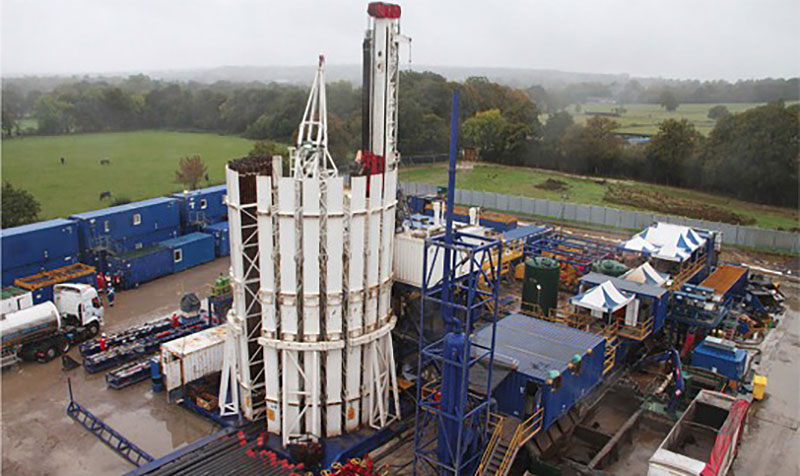
Drilling Rig Leased From Cuadrilla Drilling Horse Hill Exploration Well To A Depth Of 8,860ft In Late 2014 (Click To Enlarge)
Statements To Investors Reveal Plans
Recent statements by UK Oil & Gas Investments (UKOG) CEO Stephen Sanderson now dispel any doubt as to where this project is headed if not stopped. In a recent interview he is relatively candid regarding the company’s plans: “main zone in there is the Kimmeridge Clay … oil in place in such tight oil sections, and there are, in whole of the Weald as such, there is about 120 odd billion barrels in this section, over the Weald, its regionally extensive” and “we dealing with quite a pervasive type of deposit … extend over 1200 square miles or more of the Weald, so if we can establish that we can put a commercial development together, then clearly you can see incremental step outs over quite a large area” and “this type of oil deposit very much depends on being able to drill your wells almost back to back so it becomes very much like an industrialised process … so generally you have to drill a lot wells close to each other so you can maintain a certain level of production”.
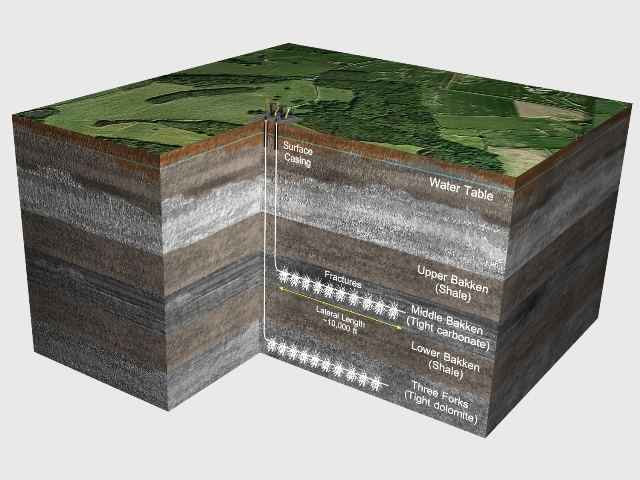
Kimmeridge Clay Shale Formation Is Similar To The Bakken Shale In North Dakota Where 10,000 Wells Have Been Drilled So Far (Click To Enlarge)
The language is dry and somewhat evasive, but it is clear what is meant by “regionally extensive”, “pervasive”, “industrialised process” and “drill a lot of wells close to each other” or “back-to-back”. This is a plan to frack the Weald, coating a large part of Sussex and Surrey, and potentially parts of Kent, in thousands of wells at typical densities of 4-8 wells per square mile. This along with the associated support infrastructure of pipelines, processing plants and waste facilities. The impacts would spread far beyond the area being drilled, especially due to the wave of construction traffic, the transportation of oil and the dumping of waste. Given how our society works, this is as close as you will every hear to a detailed explanation of what they are threatening to do. A decade ago no one in Texas, Pennsylvania or Queensland got told of a plan to coat their region in tens of thousands of wells, let alone asked them what they thought of it. The Weald will be no different: one more test well, then two, then a couple of appraisal sites, then a handful of production sites, then more, and more, and more. At no point will the full extent of where this is leading be admitted, but while words can be twisted to conceal intentions the numbers are harder to fudge.
In order to get the investment needed to continue this expensive exploration, it is necessary for companies to brag about the potential amounts of oil underneath their licence areas. While these numbers are not large in the grand scheme of things (when global oil consumption is 30 billion barrels per year), and even smaller once the effect of recovery factors which can be less than 5 percent are included, they are more than enough to threaten the wholesale destruction of the areas involved. A typical tight (shale) oil well only produces around 125,000 barrels over its short lifetime. With UKOG bragging about up to 124 billion barrels under the Weald Basin, the implied number of wells needed to extract this oil is in the tens of thousands. Extraction of even a tiny fraction of this oil would require drilling thousands of wells across Sussex and Surrey (see our previous article Wells, Wells And More Fracking Wells for a general overview of these concepts).
Hydraulic Fracturing Is A Red Herring
The question of whether hydraulic fracturing will be used at Horse Hill will doubtless be on many people’s minds, but fundamentally it is just the wrong question to ask. The main threat from the test well at Horse Hill is that it will provide the companies involved with the data they need to get more investment to advance their tight oil plans to the next stage. At present this is all about exploration, and given the costs involved in tight oil exploitation it is highly unlikely that these small companies would ever produce much tight oil in the Weald. What they could do however, is prove that it is viable and then sell out to a much larger company which can raise the billions needed to push forward with the massive drilling programme that would be required for production. If communities are opposed to this goal, of kick-starting a massive unconventional drilling campaign in the Weald, then every small steps along the way need to be fought tooth and nail.
The industry’s PR strategy has been to muddy the waters around exactly what each operator is trying to do in the Weald, since openly advocating for drilling large numbers of wells across the region is not going to make it many friends. By attempting to concentrate attention solely on the particular procedure it wants to conduct at any particular time, and denying any wider agenda, the industry hopes to sneak towards its ultimate goal one step at a time. The next stage in the process will be to apply for planning permission to “drill a horizontal sidetrack and conduct long term production tests”. At some point the question of stimulation (potentially acid fracturing since the carbonate nature of the micrite would lend itself to that) will come up since it would likely considerably increase flow rates, but the project can be advanced closer to its goal before that is needed.
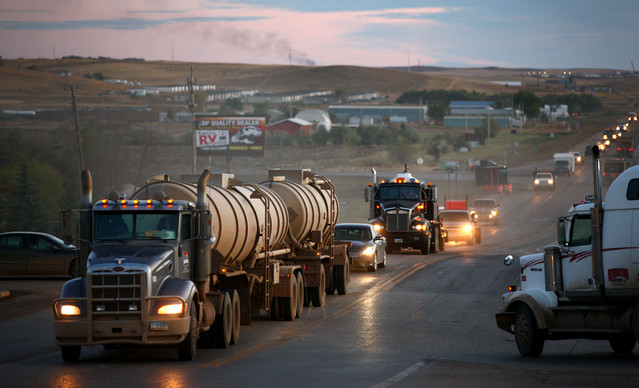
Bakken Shale Fracking Traffic On The Once Quite Main Street Of Watford City, North Dakota (Click To Enlarge)
Consideration Of Long Term Implications Is Off Limits
It should be noted that all these statements from UKOG are targeted at investors (which is usually the place to look for the most revealing information). In contrast there is a deathly silence in the mainstream media regarding where this is all heading, along with the occasional strenuous, if vague denial that this is anything out of the ordinary. The vast disconnect between this and the concerns of people living in the region stems from entirely opposing viewpoints on what constitute valid grounds for concern. People living in the Weald are most worried about the long term effect this new industry would have if it were to become established. The industry, the government and pretty much anyone with any power, including the media, are of the opinion that the only things that people are allowed to be concerned about are the immediate impacts of this one exploration well. The long terms implications of drilling these exploration wells is entirely off limits.
It is therefore unsurprising that the public discourse on the issue largely consists of the two sides talking past each other. Because the establishment cannot bring itself to even acknowledge what the public’s actual concerns are, since they are based in the wider question of whether unconventional oil and gas development should happen at all, it is left arguing about the specifics of this or that individual well. Of course this has done little to reassure the residents of the Weald. The constant use of the word NIMBY as a slur, as if people who don’t care about their neighbourhood being trashed are in some way superior, is intimately related to this viewpoint. In reality the majority of the people who were involved in the blockades at Horse Hill, and previously Balcombe, are opposed to these processes happening anywhere, including the ‘Desolate North’, and the rest of the world for that matter.
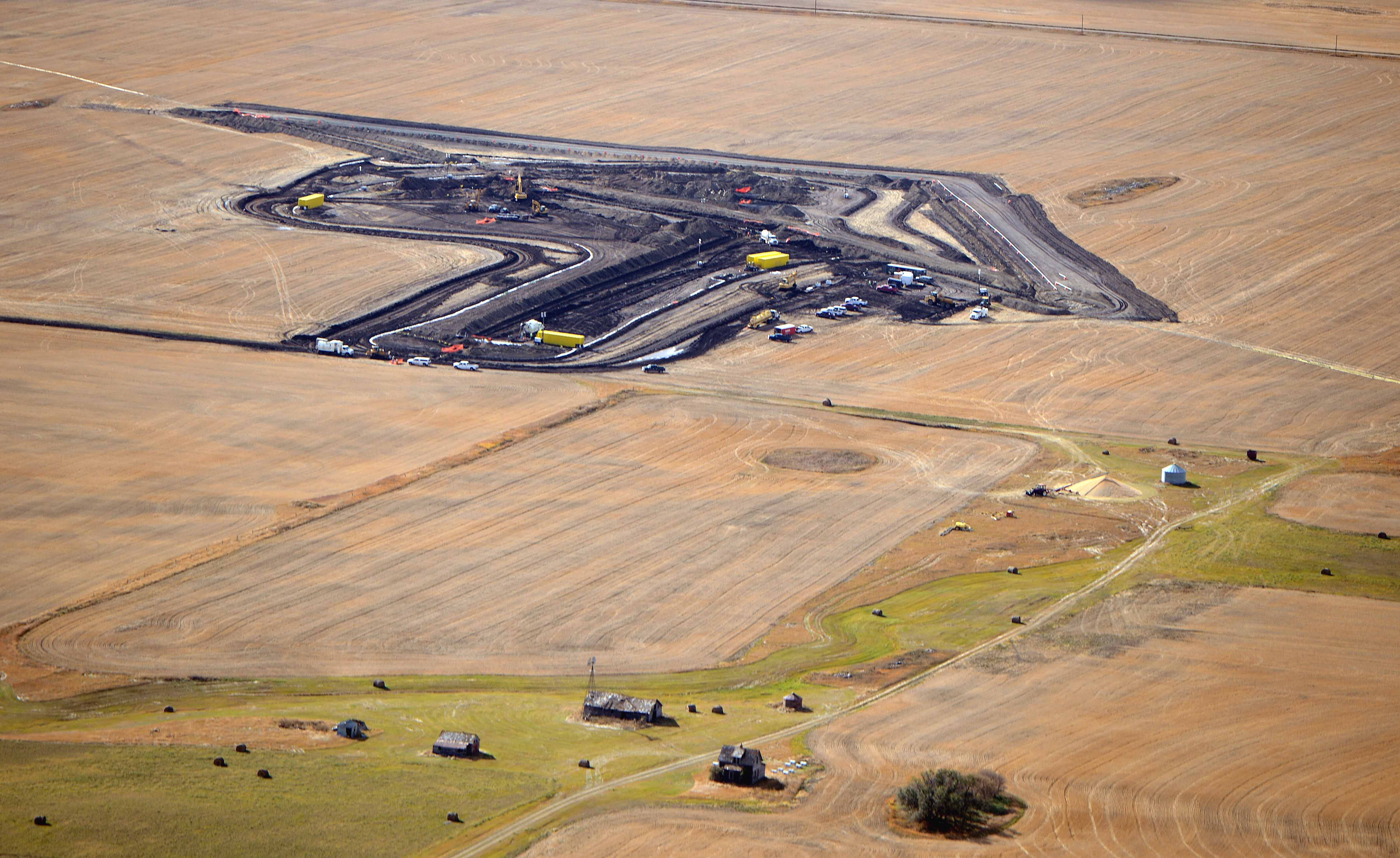
Bakken Shale Pipeline Leaks 20,000 Barrels Of Oil Into A North Dakota Wheat Field (Click To Enlarge)
Organised Communty Resistance Is Best Defense
The Horse Hill project is being run by a consortium of companies, Horse Hill Developments, in which UK Oil & Gas Investments has the largest stake (30%). The other companies in the consortium are Alba Mineral Resources (15%), Doriemus (10%), Stellar Resources (10%), Solo Oil (10%), Regency Mines (5%) and Evocutis (2%). The consortium has a 65% stake in the licence area while Magellen Petroleum, which has so far been acting as a silent partner, has the remaining 35%. Their next step will be to try to obtain planning permission from Surrey County Council for a horizontal sidetrack to the well and additional long term testing, with permission for additional wells tacked on if they can manage it. While thousands of wells spreading across the Weald is the ultimate threat here, stopping that from happening means fighting the initial exploration steps while the companies are small.
If you live anywhere in the South East of England, exploitation of tight oil in the Weald would be a threat to your community. The water contamination, air pollution, toxic and radioactive waste dumping, fracking trucks, and pipelines will spread far beyond the areas being drilled. Communities getting organised and working together is the best defense from this threat (there are now in the region of 250 groups across the country). Read about what you can do, get our step-by-step guides to starting a group where you live and start planning an effective anti-fracking campaign. Or email outreach@frack-off.org.uk for support.
Additional Information
For answers to some of the wider questions being studious ignored by the mainstream media see:



